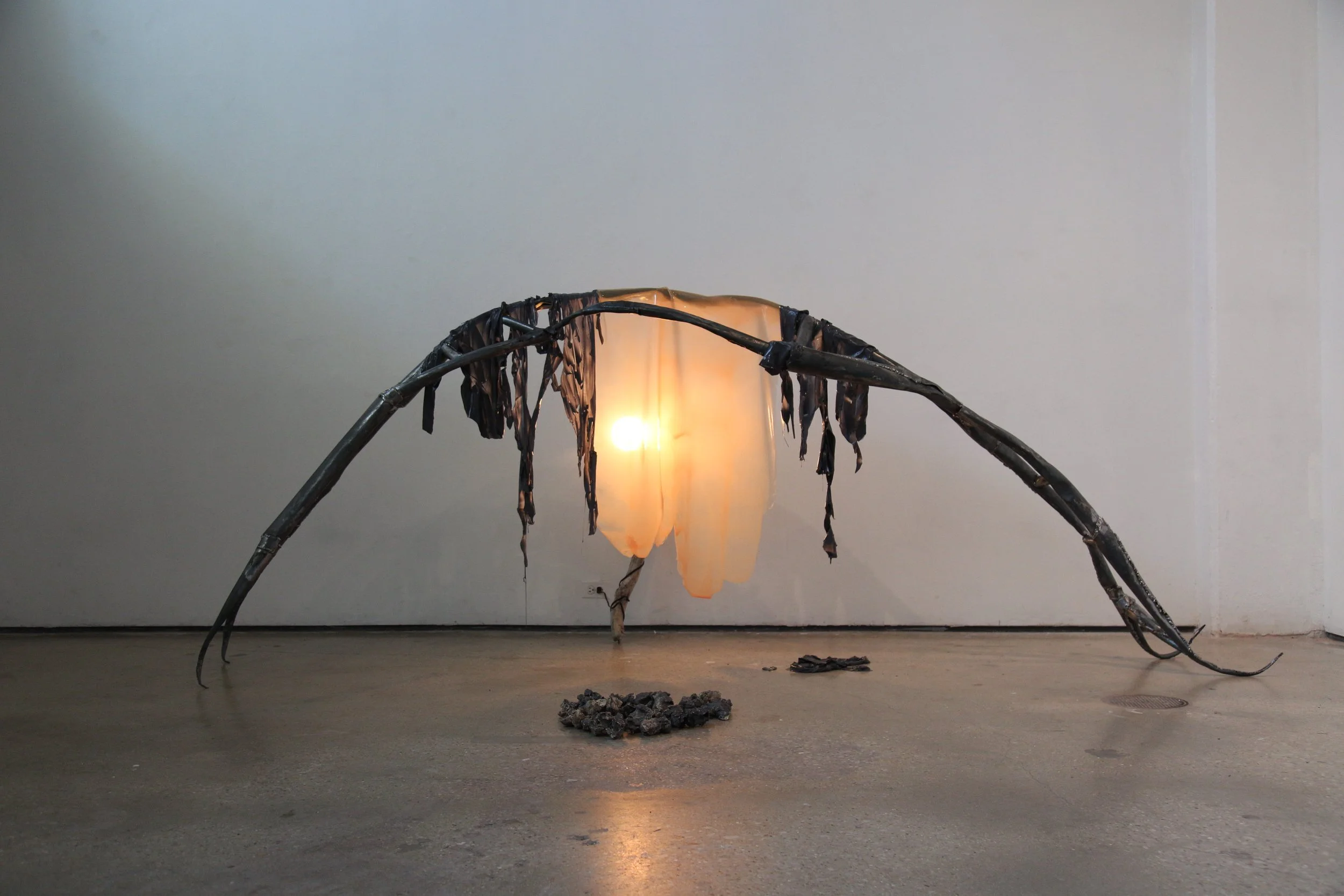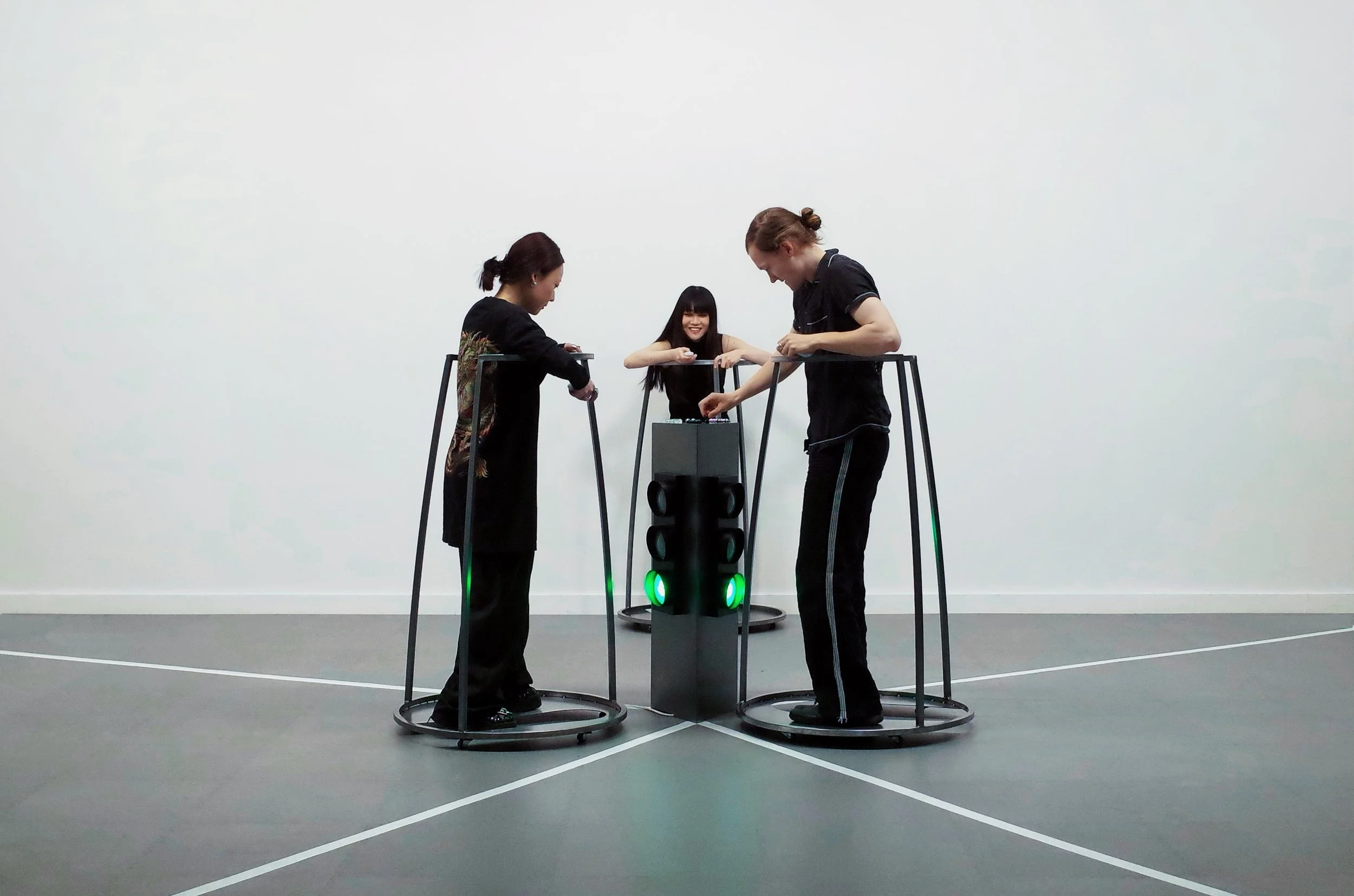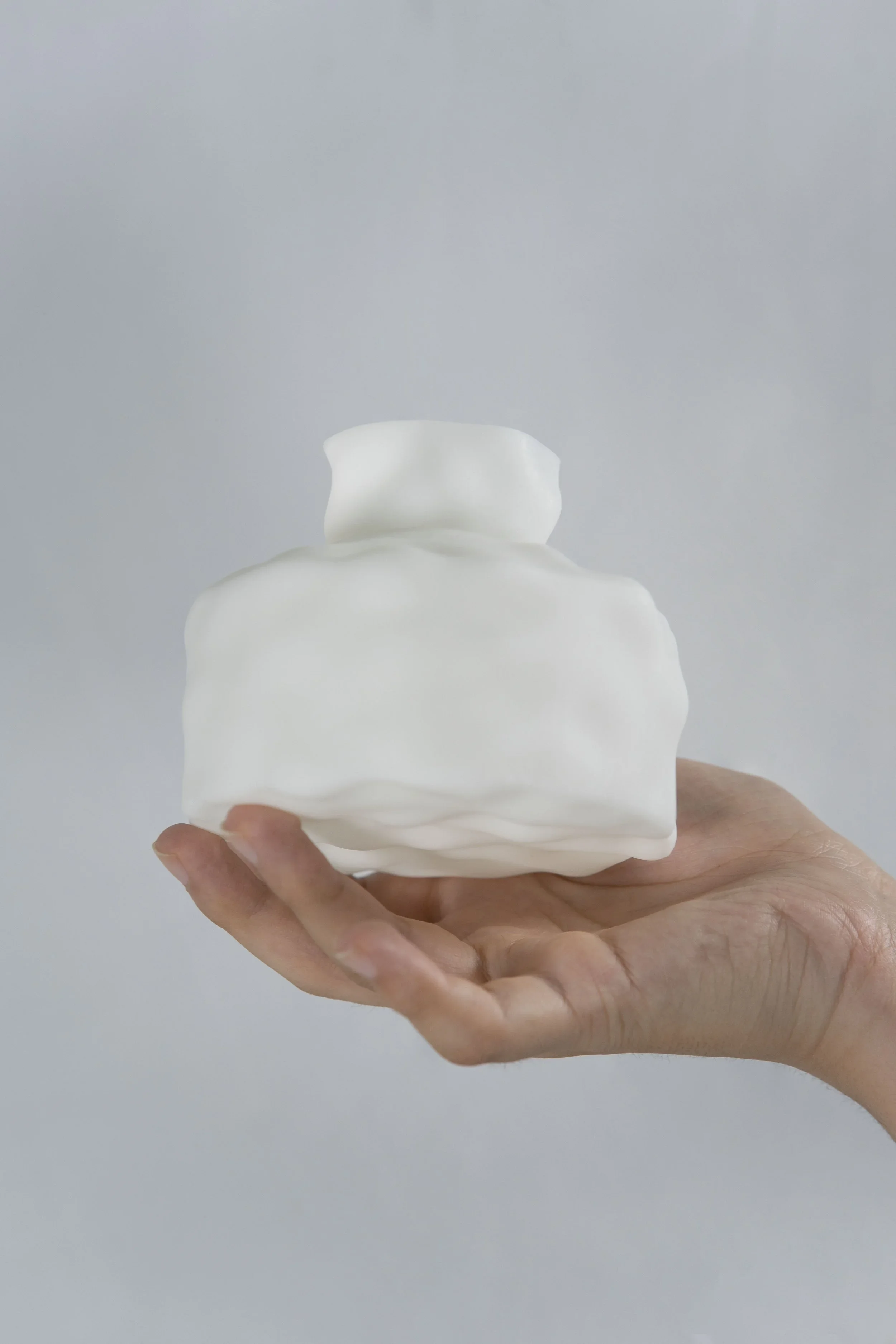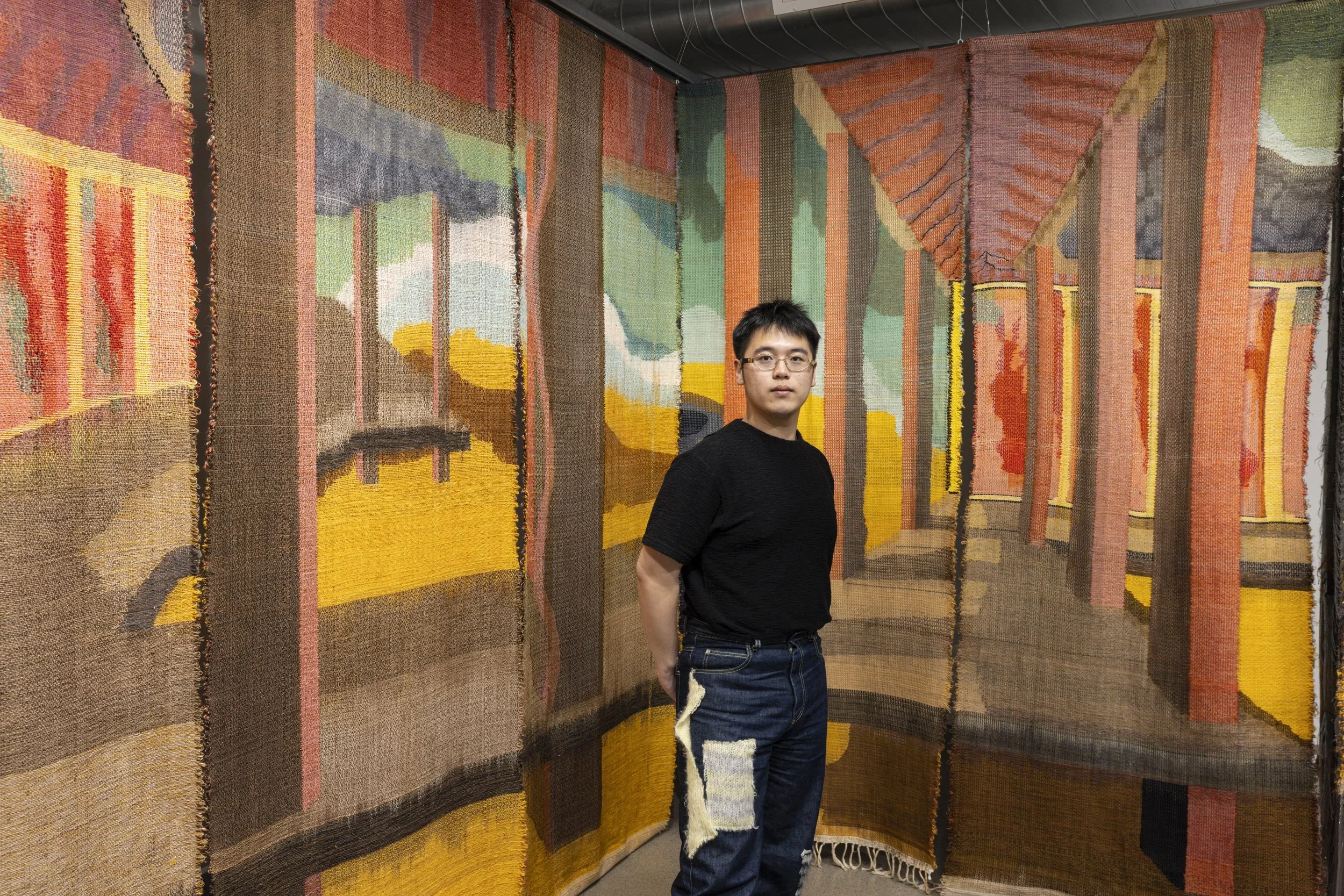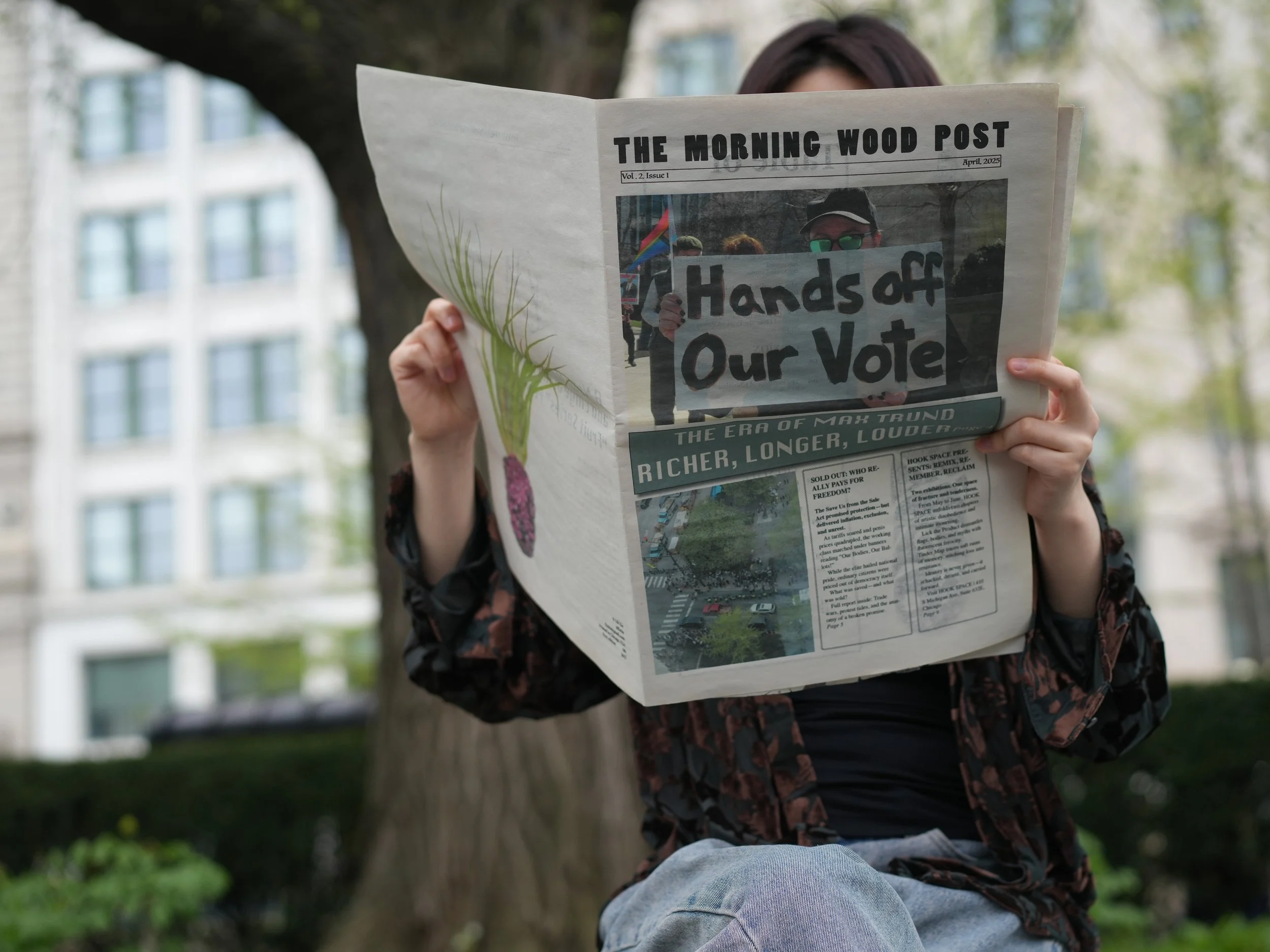10 Questions with Artist Name
Al-Tiba9 Art Magazine ISSUE13 | Featured Artist
Zheng Minzhi is a multidisciplinary artist from China, currently pursuing an MFA at the School of the Art Institute of Chicago, based in Chicago. Her work reveals the hidden and complex connections between the human body, machinery, and the inherent violence within these relationships, drawing from personal narratives. Within this private narrative framework, decaying spaces, blurred tragedies, dreams, and indulgent bodies roam freely, embracing their nomadic nature. Her primary mediums of practice are sculptural installations and 3d digital animations.
Minzhi Zheng - Portrait
ARTIST STATEMENT
Zheng Minzhi’s artwork unveils the intricate connections between the human body, machinery, and the inherent violence within these associations. She crafts an atmospheric ambiance that encapsulates an ever-unfolding event, one that is perpetually on the brink of transpiring. The tension present in the theatrical spotlight serves as a candid revelation, fostering a healing journey. Drawing upon narrative links, she reinterprets and interweaves these established "substances" to conjure a speculative world. Within this narrative framework, the decadent expanse of space, obscured tragedies, dreams, and unbridled bodies roam freely, embracing their nomadic nature.
A bad playground at Midday in Summer, metal and silicon, 96x48x72 inches, 2022 © Minzhi Zheng
A Bad Playground at Midday in Summer | Project Statement
Drawing from personal narratives, the artwork uses private memories to construct a distorted "amusement park," depicting the feelings of isolation and shame experienced when participating in an exclusionary social framework with an untimely identity.
A bad playground at Midday in Summer (detail), metal and silicon, 96x48x72 inches, 2022 © Minzhi Zheng
Get your limited edition copy now
INTERVIEW
Let's start from the beginning. How did you get involved with art, and what influenced you to follow this path?
In the first two years of university, I learned some basic skills. Throughout this time, I was constantly pondering the issue of the origin of memories, which led me to think more introspectively and guided me to continue with art.
How much does your background influence your current work?
My current artistic practice is mainly based on my own personal narratives. My entire childhood and adolescence were spent shuttling between rural areas and urban construction sites. Workers, as never-accepted "second-class citizens," shuttle between these two marginal areas. The environment of rural China and construction sites have shaped all of my memories. Such experiences have allowed me to glimpse the sharp oppositions between the edge and center of society (the migration of workers, the tremendous changes in cities, the transformation of families, the shifting structure of desires, the useless being abandoned, the exploitable being suppressed, and the constructed being beautified). "Desire Infection" spreads from any "substance" (a dog to a building, to the underground tunnels that fill the city, and finally to the powerless "worker-machines" who cannot bear desire.) In different "media," each infection of desire is being translated into new forms. Under such influences, I use overlapping and independent metaphors to express the hidden relationships between bodies, machines, and violence. I employ a "private language" to express the alluring yet impenetrable reality of our world.
A bad playground at Midday in Summer (detail), metal and silicon, 96x48x72 inches, 2022 © Minzhi Zheng
Where do you find inspiration for your artwork? Do you have any artist or movement you admire, or is your inspiration more organic, coming from everyday life?
My inspiration comes from the multiple metaphors generated in my subconscious. In my current artistic exploration, I am experiencing an increasingly closed process, trying to break free from norms and restrictions. Outside of personal experience, there is an abundance of exciting but dangerous information that can influence one's thinking and judgment. So I have started to filter my readings on art consciously. I lean more toward text reading. Polish writers Olga Nawoja Tokarczuk and Annie Ernaux have had a significant impact on me. Olga's plain narrative style and unique perspective on constructing worlds have influenced my way of personal storytelling. Annie's exposed writing has allowed me to explore more sincere, hidden relationships in my personal history.
In your work, you deal with a vast array of different themes. What are the key ones you address and consider central to your research?
The key is how to handle the sharp relationships between multiple overlapping and independent metaphors. For "A bad playground at Midday in Summer", I describe a delicate ruin scene under the midday sun. When arranging these metaphors, confusion, and contradictions often arise. The vitality of metaphor happens in processing is another key that I want to catch.
A bad playground at Midday in Summer (detail), metal and silicon, 96x48x72 inches, 2022 © Minzhi Zheng
A bad playground at Midday in Summer (detail), metal and silicon, 96x48x72 inches, 2022 © Minzhi Zheng
Let's focus on your series, A bad playground at Midday in Summer. How did you come up with the concept for this series?
This is a narrative installation sculpture. The concept originated from my memory of "adventuring" alone in the scorching sun at noon, leaving the construction site to play in the empty amusement park in the urban residential area. My "untimely identity" and the social space were in absolute opposition, followed by an irresistible sense of shame. In the sculpture, I use dazzling sunlight, deformed monkey bars, melted soft materials, and the layout of ruins to depict the relationships between opposing roles.
In the series, you use "private memories to construct a distorted amusement park," as you mention in your statement. What messages do you want to convey with this work?
The amusement park is polyphase. In regulated social space, a beautifully constructed playground for a specific "higher class" becomes a closed monster, while a ruined site becomes an open nature playground. I portray the twisted amusement park to convey the oppositional relationship between the edge and center of cities and express the feelings of isolation and shame that arise after being positioned as an "untimely identity" and participating in "exclusive social spaces."
Can art be a valuable medium to address such important themes? And how can artists help spread awareness on such themes?
Yes, it can. Different media determine the way and state in which a concept is represented. Before starting a new project, I engage in writing and self-conversation first. Repeated writing and conversation can cause doubts about emotions and events. When I start creating a sculpture, the sculpture leaves traces of occupation in the space. I am no longer a narrator or doubter of memories but a surrounded "object." Objects of doubt are also passed on to different "substances." This is the importance of media. So, for me, facing and doubting myself and my memories is an essential way to artistic expression.
A bad playground at Midday in Summer (detail), metal and silicon, 96x48x72 inches, 2022 © Minzhi Zheng
A bad playground at Midday in Summer (detail), metal and silicon, 96x48x72 inches, 2022 © Minzhi Zheng
Is there any other project or concept you would like to tackle in the future?
Yes, the diverse relationship between multiple metaphors always is reflected in different works. I am currently working on a new piece, "Looking for Crystals," which explores the covert process of desire transfer.
What are you working on right now? Do you have any new projects or series you are developing at the moment?
"Looking for Crystal" is a piece I will soon complete. I am also experimenting with 3D digital animation, trying various media to allow more freedom in language development and to avoid the stagnation of expression that may arise from staying in one medium for too long.
Finally, where do you see yourself five years from now?
This is a difficult prediction for me. I enjoy my current creative state because I feel like I have found a way to understand the past. At the same time, I look forward to the new insights that the randomness and inevitability of things will bring me through continuous practice. I am looking forward to who I will be five years from now.

